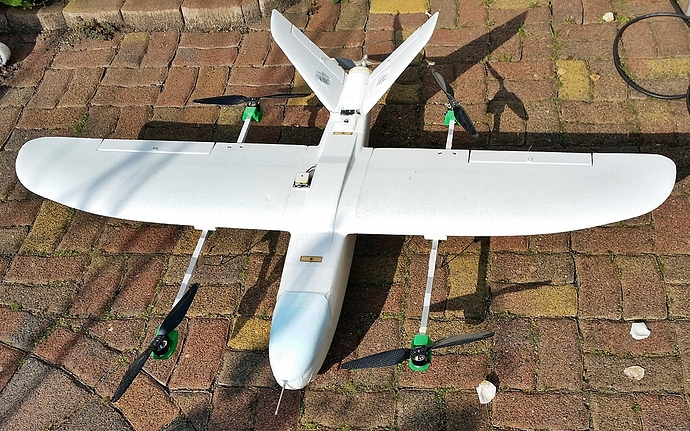Hello Henry, still disagree ![]()
I think there is a lot to optimize !
Mine: 2320 g 4s 5200mah 10C only for forward propulsion
Prop: Aeronaut 10x8 / Cobra C-2814/16 Kv 1050
(You can’t do a hand launch with this combination)
90 Watt at 65 km/h (40 mph) Airspeed
75 Watt at 61 km/h (38 mph) Airspeed
Every gram is important in copter modes. As an airplane additional weight is not so important - it increases the stall speed somewhat. But it is much more important for the efficiency that the CG is correct and the engine / propeller runs efficiently at cruising speed. With the VTOL we do not need to pay attention to minimal stall speed or enough thrust at zero speed for the hand launch. Under these assumptions, the quadplane is more efficient in case of long duration/distance flights with only 2 short copter-phases. It would be different, if we use pitch adjustable props.
